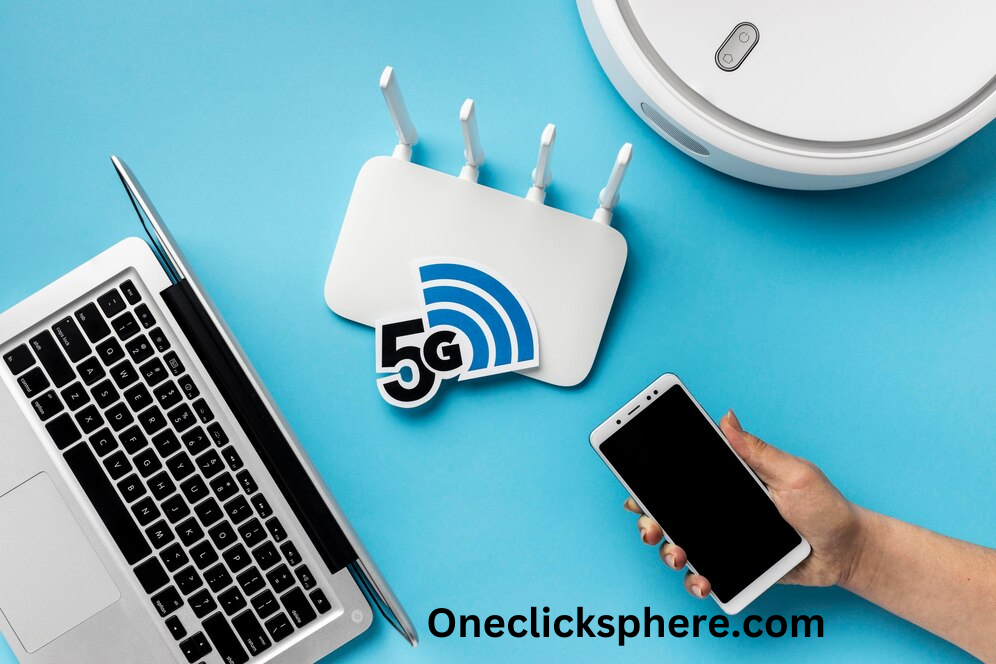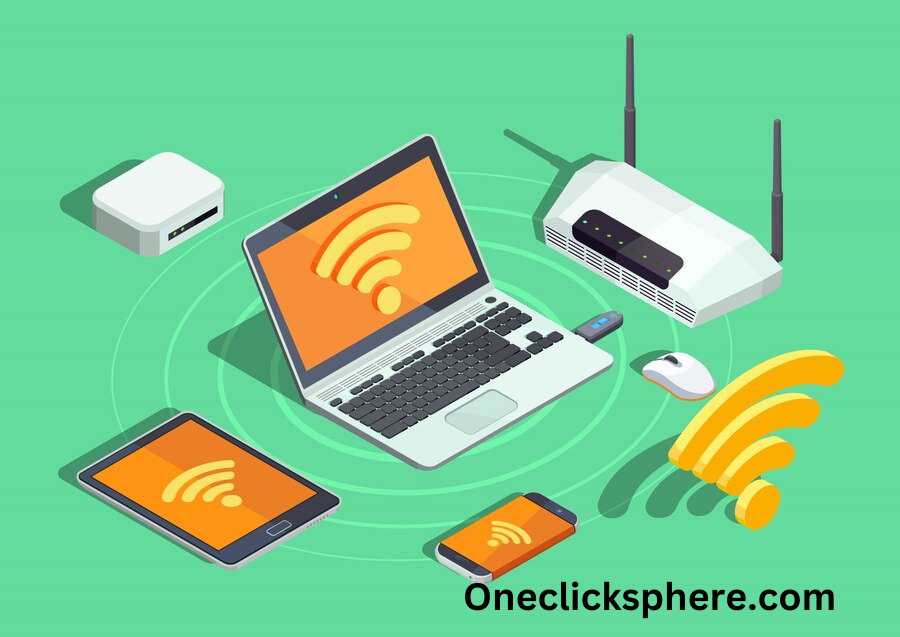Two new technologies, Wi-Fi 6 and 5G, are changing how we go online. They both offer faster speeds, less delay, and a better experience.
Wi-Fi 6 is the latest version of wireless internet for homes and businesses. It allows more devices to connect at once and gives better support for smart devices. It’s great for places like offices, schools, or homes with many users.
5G is the newest mobile network. It brings super-fast speeds and very low lag. This makes it perfect for things like video calls, online gaming, and using the internet on the go.
Even though Wi-Fi 6 and 5G are different, they work well together. Each has its strengths. Wi-Fi 6 is best for indoor use. 5G is better for when you’re outside or moving around. Both are big steps forward in technology. They will help us stay connected faster and more smoothly, no matter where we are.
Understanding 5G and Wi-Fi 6
What is 5G

5G is the latest mobile network. It is much faster than 4G. It can handle more devices at once and has very low delay. This means you can stream, game, and browse with almost no lag. It is around 50 times faster than 4G and can carry a lot more data. To use 5G, you need a 5G phone and a plan from your mobile company. 5G also supports new tech like smart machines, remote work, and virtual reality. Some businesses can even build their own private 5G networks, just like they do with Wi-Fi.
What is Wi-Fi 6

Wi-Fi 6 is the newest version of Wi-Fi for homes and offices. It is faster and works better when many devices are connected. It is about three times faster than Wi-Fi 5 and has less delay, so everything loads quicker. To get the best results, you need a Wi-Fi 6 router and devices that support it. Anyone can set up Wi-Fi 6 with a broadband connection. It is perfect for places with lots of smart devices, like homes, schools, or offices.
How 5G and Wi-Fi 6 Work Together
Both Wi-Fi 6 and 5G are modern wireless technology. Their capacity to give minimal latency and quick speeds increases the user experience. With their differences, they aren’t meant to be replaced by one another. They match each other perfectly. Whereas 5G is best suited for outdoor use or locations demanding long-range coverage, Wi-Fi 6 is ideal for indoor settings like homes and offices. Wi-Fi will continue to be the popular option for the majority of homes and businesses due to its less costly installation and simpler management. Multiple gadgets, including phones, computers, TVs, and printers, are suitable for it. However, 5G is ideal for automobiles, smart cities, and industries since it can manage big spaces and quickly shifting devices.
Technology Behind 5G and Wi-Fi 6
5G and Wi-Fi 6 use modern wireless techniques to improve speed and efficiency. But they use different types of radio signals and ways to connect devices. Companies can use both at the same time to meet different needs. For example, 5G is better for driverless cars that need fast and steady connections. Wi-Fi 6 works well for offices with computers, printers, and video calls. Wi-Fi is still the easiest and most common way to connect indoors. It works with almost every device and doesn’t cost much to set up. In the past, private cellular networks were too expensive for businesses, but now private 5G is becoming easier to use. It offers strong, reliable connections and can be built just like Wi-Fi networks.
Comparing Wi-Fi 6 and Private 5G
Private 5G has some big advantages for companies that need reliable connections all the time. Hospitals, factories, and universities can build private 5G networks that cover large areas without needing many antennas. It also gives better protection from outside signals because it uses special radio bands. New types of 5G networks are being made that look and feel like regular Wi-Fi networks, so businesses can set them up with more control. With 5G, they can manage how much data each device gets and make sure important apps always have enough speed.
Security and Privacy
Strong security is provided by both 5G and Wi-Fi 6, but they use different techniques. WPA3, the security mechanism used by Wi-Fi 6, has strong encryption and is simple to set up with QR codes. For device access, 5G employs SIM cards or eSIMs, which are hard to hack and simpler to manage for a large number of devices. Because of this, 5G is a better option for linking numerous devices or sensors, particularly in safe places like factories or hospitals. Your data is secured by each system, but 5G by default gives greater privacy.
Coverage and Performance
Wi-Fi is mainly built for short distances, like in one building or room. It needs more access points to cover large spaces. 5G was built to cover wider areas. It uses more powerful signals and different frequency bands to reach farther. Indoors, 5G can cover three to four times more space than Wi-Fi, and outdoors, it can reach up to ten times more area. It also performs better when many devices are connected at once. 5G can send and receive data more smoothly, which is helpful for places with lots of users or machines. It adjusts its signal based on how far the device is and what kind of wall or object is in the way. That’s why 5G is great for growing businesses that want better wireless service beyond the walls of their office.
Speed and Latency
Both Wi-Fi 6 and 5G can deliver very fast speeds. Wi-Fi 6 can reach up to 9.6 Gbps, and 5G can go up to 20 Gbps in ideal situations. Most people won’t notice a big difference in speed during normal use. However, 5G usually performs better when it comes to low delay and consistent performance. This is important for tasks that need instant response, like live streaming, robotics, or augmented reality. Some new technologies, such as remote surgery, have already shown how 5G’s low latency can be life-changing.
Reliability and Connection Quality
When talking about reliable connections, 5G is more stable because the network controls how devices connect and stay connected. It switches smoothly between towers and avoids outside interference better, especially when using the CBRS spectrum. This spectrum gives both open and licensed access, which helps businesses get better performance. On the other hand, Wi-Fi 6 works on unlicensed signals, which means other nearby Wi-Fi networks can cause interference. This can be a big issue in hospitals or factories where the network must work without fail. That’s why some companies use both—Wi-Fi for general use and 5G for important systems that need no interruptions.
Cost of Setup and Maintenance
Wi-Fi 6 is cheaper at the start. The devices and equipment are affordable, and you don’t need to pay to use the radio signals. However the coverage area is smaller, so more access points may be needed. 5G devices usually cost more upfront, especially the chipsets and antennas. Still, for large areas, 5G might save money over time because it needs fewer devices to cover more space. If a company sets up its own private 5G network, it can avoid extra fees like data limits or slowdowns from mobile carriers. Today, private 5G systems are getting easier to set up, with plug-and-play options that don’t require special skills. For small spaces and offices, Wi-Fi 6 remains a great choice. But for bigger companies, 5G can be the smarter investment in the long run.
How Devices Connect and Authenticate
5G and Wi-Fi 6 have different ways to let devices connect securely. Wi-Fi 6 mostly uses passwords and network names for access. It supports WPA3, which is the latest Wi-Fi security standard. This adds better protection and allows for safer logins using newer methods like SAE. Older devices can still use WPA2 if needed. On the other hand, 5G uses SIM-based access, just like mobile phones. It also supports multiple types of secure logins to protect the network even more. These strong systems are especially helpful when many devices need to connect, like in smart factories or big business networks.
Table: Key Differences Between Wi-Fi 6 and 5G
| Feature | Wi-Fi 6 | 5G |
| Technology Type | Wireless LAN | Cellular Network |
| Max Speed | Up to 9.6 Gbps | Up to 20 Gbps |
| Range | Short to Medium | Medium to Long |
| Latency | Low (around 10ms) | Ultra-low (as low as 1ms) |
| Spectrum | Unlicensed | Licensed/Unlicensed/Shared |
| Deployment Cost | Lower | Higher upfront |
| Security | WPA3 | SIM-based Authentication |
| Best For | Indoor, home/office use | Outdoor, mobile, and industrial use |
Conclusion
Both 5G and Wi-Fi 6 are strong technologies, but they were created to serve different purposes. For home and work settings where a lot of devices are connected and cost is an issue, Wi-Fi 6 is perfect. For daily use, it is safe, reliable, and affordable. 5G, on the other hand, is ideal for large-scale or critical tasks because it provides more speed, shorter latency, and wider coverage. Smart cities, hospitals, and businesses are set to gain more from 5G’s capabilities. Depending on the situation and particular requirements, mixing the two technologies can be the best course of choice.
FAQs
Can I use Wi-Fi 6 and 5G on the same device?
Yes, most new phones, tablets, and laptops can connect to both Wi-Fi 6 and 5G networks. This gives you more flexibility.
Do I need a router for Wi-Fi 6?
Yes, to use Wi-Fi 6, both your router and devices must support it. Older routers won’t give you the new features.
Will 5G replace Wi-Fi?
No, 5G won’t fully replace Wi-Fi. Each is useful in different places like indoors for Wi-Fi and outdoors for 5G.
Is 5G available everywhere?
Not yet. 5G is still expanding, and some areas might not have strong or full coverage right now.
Can I use 5G without a SIM card?
Normally, a SIM card is needed. However, some systems use eSIM or private access, especially in business setups.

